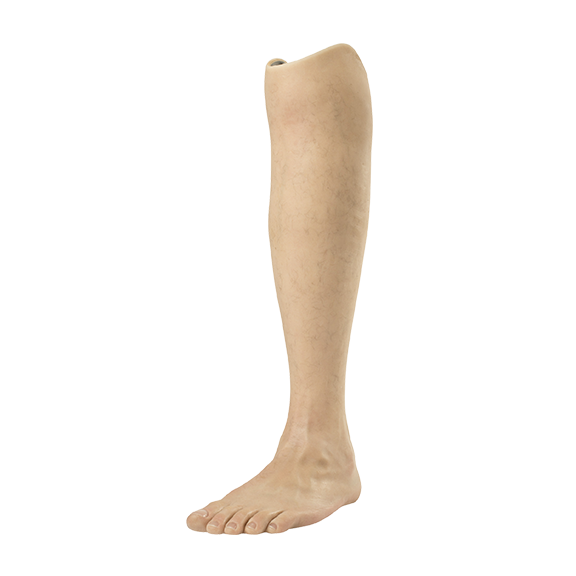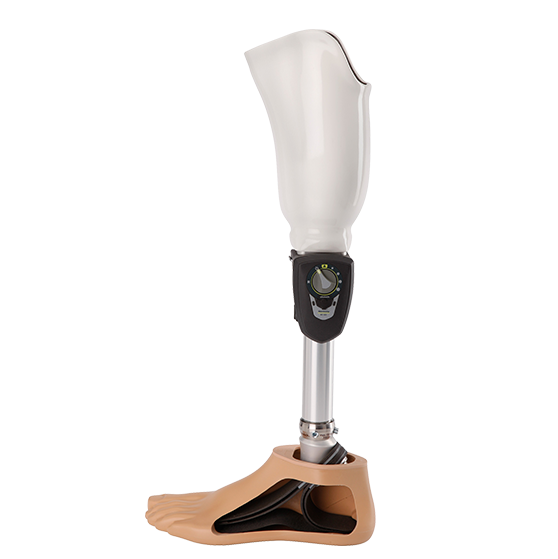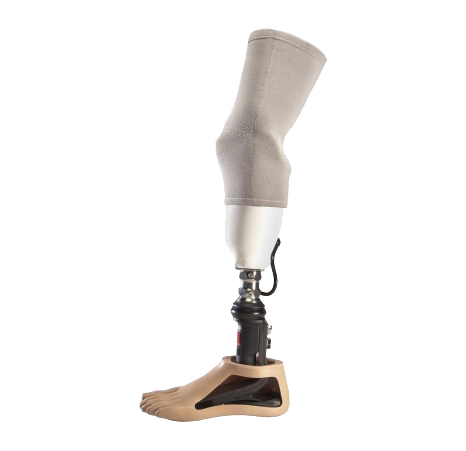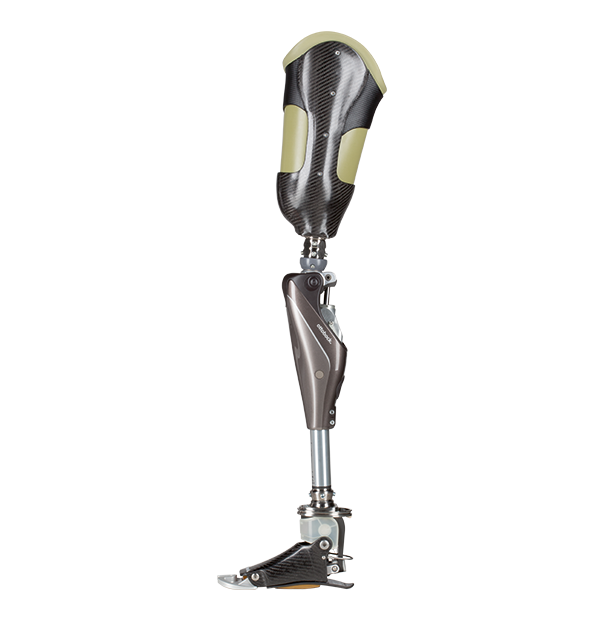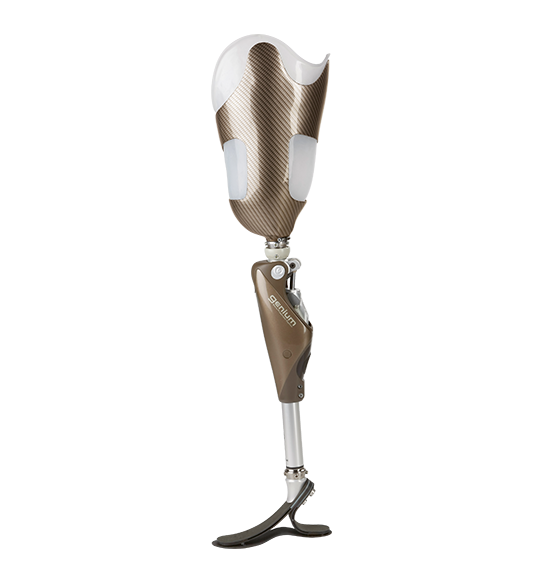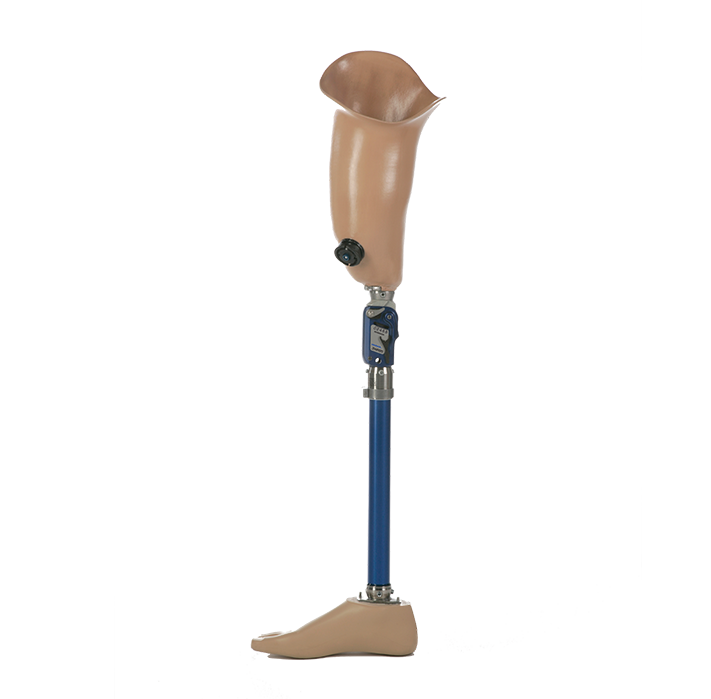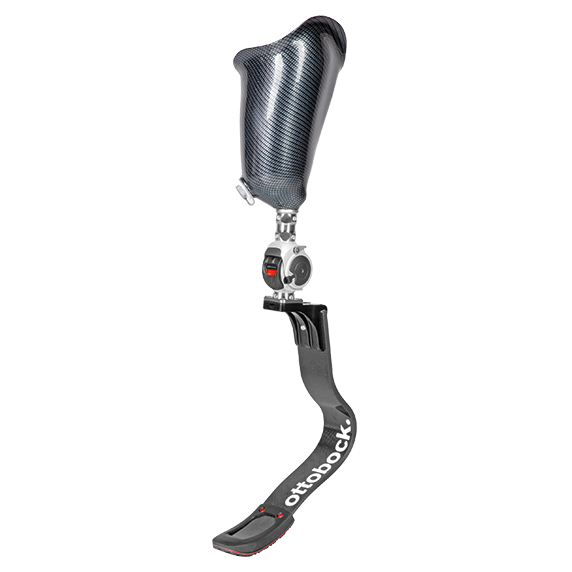Leg Prostheses
In the case of an amputation or birth defect where part of the leg is missing, there are different types of leg prostheses. Depending on the height of the amputation, the amputation level of your limb is determined. In addition, the shape of the stump is also important for choosing a prosthetic leg.
Structure of the Leg Prosthesis
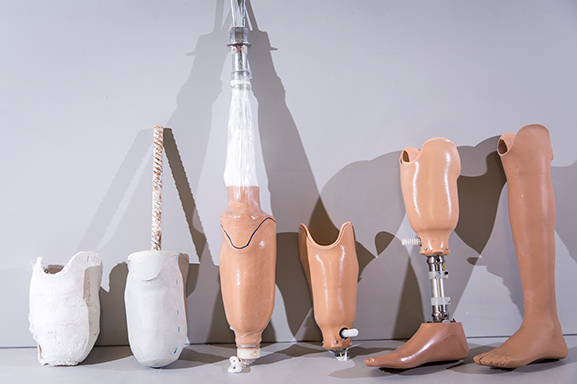
A leg prosthesis consists of different parts. Each part has its own function which gives you the opportunity to function independently again. We also do everything we can to make the prostheses as light as possible, which facilitates lifting and being moved by third parties.
Liner : The liner is the most important part of your leg prosthesis. This fastening system is a kind of stocking that for the most part consists of silicone or a copolymer. The liner functions as an intermediate layer between your skin and the inner wall of your tube and ensures a connection between the stump and your prosthesis.
Sleeve: Here comes the stump. The sleeve provides support, firmness and power collection for the stump. The other parts are attached to this.
Connection tube : This is the connection between the sleeve and the prosthetic foot
Prosthetic foot : The prosthetic foot provides shock absorption while walking. There are different types of prosthetic feet, depending on comfort, function, flexible movement and energy storage. Click here for more information about prosthetic feet.
The Provisional Prosthesis
In consultation with the doctor, it is determined after the amputation whether the scars are sufficiently healed and whether the stump can tolerate light loads. The stump can then be bandaged (by applying a pressure bandage) or covered with a silicone liner. These methods must place a certain pressure on the stump in order to reduce the stump shape and stump volume. If the stump tolerates this well and the shape adapts, an evaluation prosthesis can be used.
The evaluation prosthesis serves to start the rehabilitation process as quickly as possible. With this prosthesis you will learn to stand and walk again. Together with your doctor and physiotherapist, it is checked during rehabilitation whether the stump has stabilised with regard to the scars, volume and position of the stump. Depending on these elements, it is decided in which group the patient will be situated, and a definitive prosthesis can be made.
The Definitive Prosthesis
After the rehabilitation period of 3 to 6 months, it is determined to which prosthetic wearer group you belong. This is done by the rehabilitation doctor and the prosthetist. Depending on the group, it is then determined with which parts the definitive prosthesis will be made.
Cosmetic prosthesis (group 1)
A cosmetic prosthesis is provided for one or two amputations of the lower limbs and where there is no prospect of walking. The cosmetic prostheses are therefore made with the emphasis on a beautifully anatomically finished leg that is regarded as a real leg for the outside world.
Transfer prosthesis (group 2)
A transfer prosthesis is provided for one or two lower limb amputations and where there are limited prospects for a walking function. Transfer prostheses are only used for short-distance journeys, both inside and outside, with the use of walking aids. With a transfer prosthesis, the emphasis is mainly on the easy and quick insertion and removal of the prosthesis.
Final prosthesis (group 3)
You have a limited walking function, use walking aids but can move without the help of third parties. You also participate in social activities outside your home.
Final prosthesis (group 4)
You are active and can walk with your prosthesis without walking assistance and you participate in social activities outside your home.
Final prosthesis (group 5)
You are very active, the possibilities of your prosthesis must meet a walking test without walking assistance or other support.
A leg prosthesis in your favourite colour or print
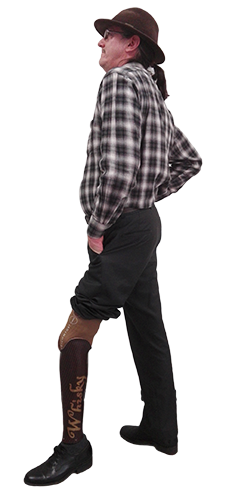
Some prosthetic users prefer that their prosthesis appears as ‘real’ as possible, while for others the prosthesis may not be remarkable enough. There are therefore different types of prosthetic covers:
Natural look
With a natural look, a cosmetic cover is made over the prosthetic leg, made of foam. This cover may not look lifelike, but it will show lifelike as soon as clothing is worn over it. However, the cosmetic cover is not the same as a cosmetic or silicone prosthesis, made entirely to the wishes and needs of the patient.
High-tech Appearance
A plastic cover is made over the prosthesis knee to protect the prosthesis from damage and wear, without compromising freedom of movement. A foam cover is no longer necessary for plastic covers. Instead of a natural look, a plastic cover gives a mechanical look. The prosthetic leg does get a natural look when clothing is worn over it.
Unique Appearance
It is also certainly possible to personalise the prosthetic cover. Various companies focus on manufacturing unique covers for prostheses. You can choose from bright colours, motifs and structures, or a self-supplied design! For more inspiration, keep an eye on our Facebook and Instagram page or view the various options via #prostheticcover on Instagram!
In addition to definitive leg prostheses for daily use, we also offer different types of prostheses that are required in certain situations. Below you can find some examples of these prostheses:
Bath, Shower and Swimming Prosthesis
Showering or swimming with a normal leg prosthesis is not possible. On request we can make special bath or swim prostheses, but these are rarely reimbursed by the health insurance fund. So informing yourself good enough is essential. A bath prosthesis is mainly used when moving to and from humid environments such as outdoor swimming pools, the sea or the beach. If you wish, the prosthesis can be fitted with a hinged ankle and/or blocking knee so that you can actually swim. They can also be used for showering.
Sports prosthesis
These prostheses are made for patients with specific wishes in their sport. Sports prostheses are mainly made of carbon in order to obtain the lightest possible weight and yet to guarantee a very powerful push-off. We already have extensive experience with various sports prostheses in all kinds of sports disciplines such as climbing, cycling, snowboarding, fin swimming and many more!
We do this in collaboration with top brands including Otto Bock and Ossur to be able to deliver top performance!
New: Amputee Care Center, a UNIQUE CONCEPT with total care for amputees
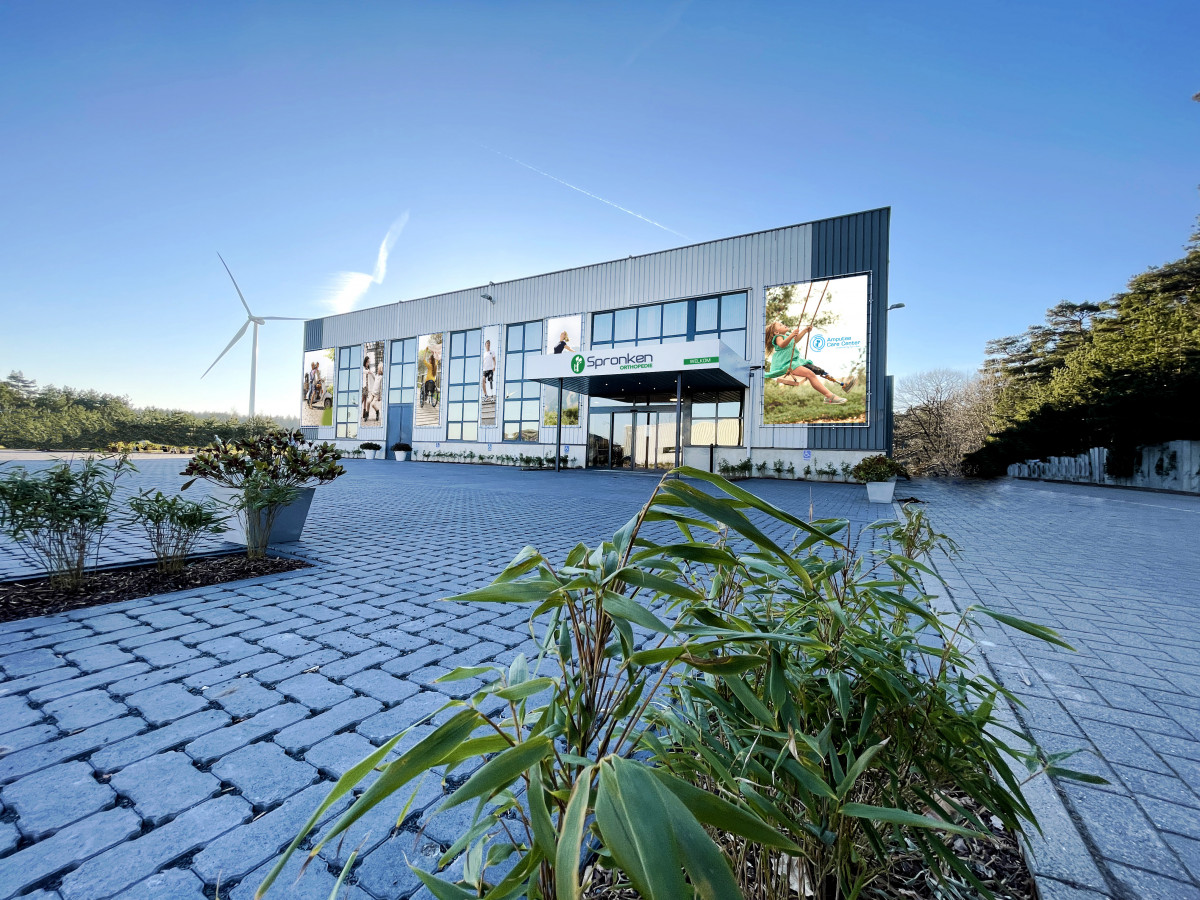
Learning to live with a prosthesis and living life to the full with it requires specialist and centralised care. This applies both to patients who have just been amputated, but also to those who have already completed the acute phase of rehabilitation.
Unfortunately, once back home, many prosthesis users notice that their follow-up, whether prosthetic-technical or physical-mental guidance, could be better.
To help these people, the Amputee Care Center offers total care to both lower and upper limb amputees. The main objective is to provide continuous care for users of all ages and their environment.
The strength of our philosophy is based on a holistic total approach, as part of which you have a team of specialists and coaches at your disposal. We are convinced that by applying this approach we really can make a difference for you.
Click here to learn more about how we can help you.

